
Related Artworks
Discover similar artworks
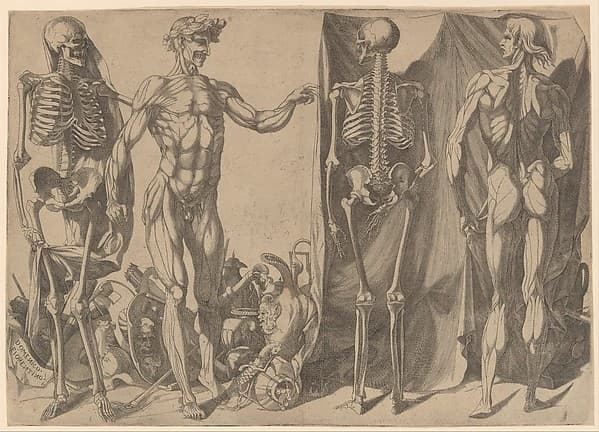
Two Flayed Men and Their Skeletons
ca. 1540–45

The procession of Silenus who is carried on an ass preceeded by a bacchant playing the cymbals and other figures
ca. 1531
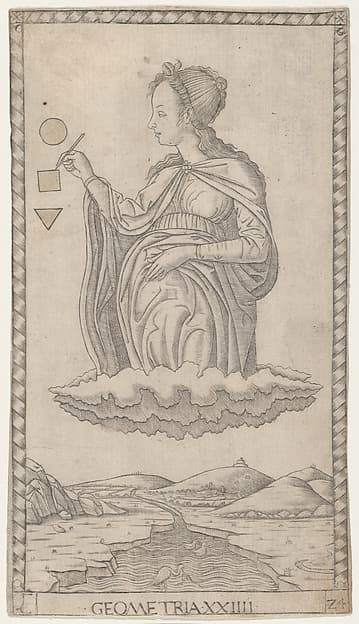
Geometry (Geometria XXIIII)
1460–70

Ornamental Panel
ca. 1514–36

At left four shepherds with musical instruments seated under a group of trees; at right a hilly landscape with buildings
ca. 1517

Mary Magdalene in penitence in the desert
ca. 1810

Saint Job, wearing a cloak, from "Piccoli Santi" (Small Saints)
ca. 1500–27

Speculum Romanae Magnificentiae: Decorated capital and base
ca. 1537

Speculum Romanae Magnificentiae: Apollo Tending the Flocks of Admetus
16th century

A naked youth holding in left hand a deformed child
ca. 1500–34

Battle of the Sea Gods (right portion of frieze)
before 1481

The Coronation of the Virgin, at lower left stands St John the Baptist, at lower right St Jerome, God the father above
1530–60
More by Marcantonio Raimondi
Explore other works by this artist

An allegory of Peace; Peace personified as a woman standing in a landscape holding the left hand of a winged genius
ca. 1517–20
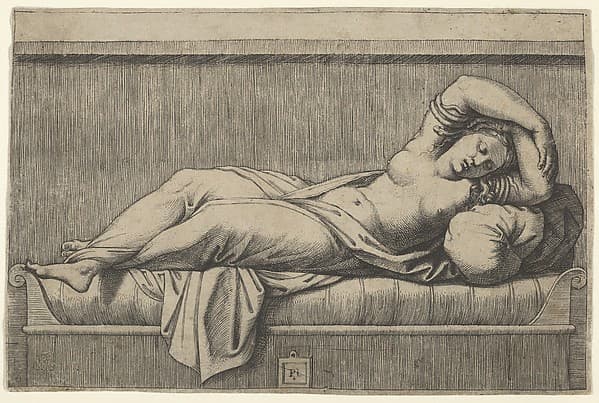
Cleopatra lying partly naked on a bed
ca. 1515–27

Venus drying her foot with a piece of drapery, Cupid in front of her, holding a bow in his left hand
ca. 1510–27

An allegory of Peace; Peace personified as a woman standing in a landscape holding the left hand of a winged genius
1530–40
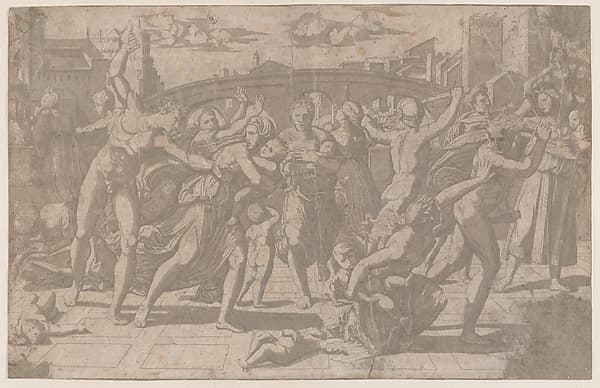
The Massacre of the Innocents
ca. 1520–27
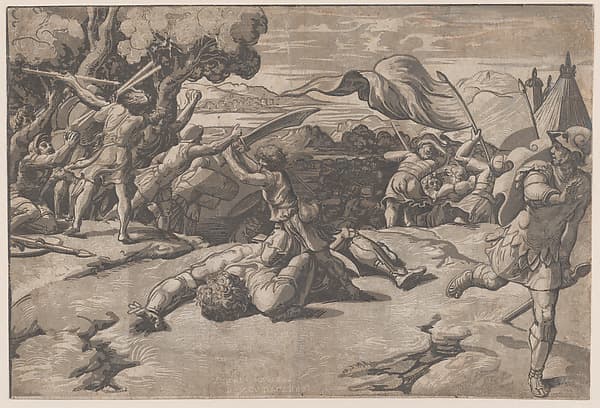
David and Goliath
ca. 1520–27

David and Goliath
ca. 1520–27

David and Goliath
ca. 1520–27

Venus Crouching

Fifteen Nude Children Dancing
1535

Galatea standing in a water-chariot pulled by two dolphins, surrounded by tritons, nereids, and putti, three of which prepare to shoot arrows from above
1515–16

Judgment of Paris: Paris extends his hand toward Venus, who stands between Juno and Minerva, surrounded by reclining and seated figures; above are a winged figure carrying a laurel wreath, a charioteer driving four horses, Castor and Pollux, and Jupiter accompanied by Ganymede, an eagle, Diana, and two other female figures
ca. 1520–50